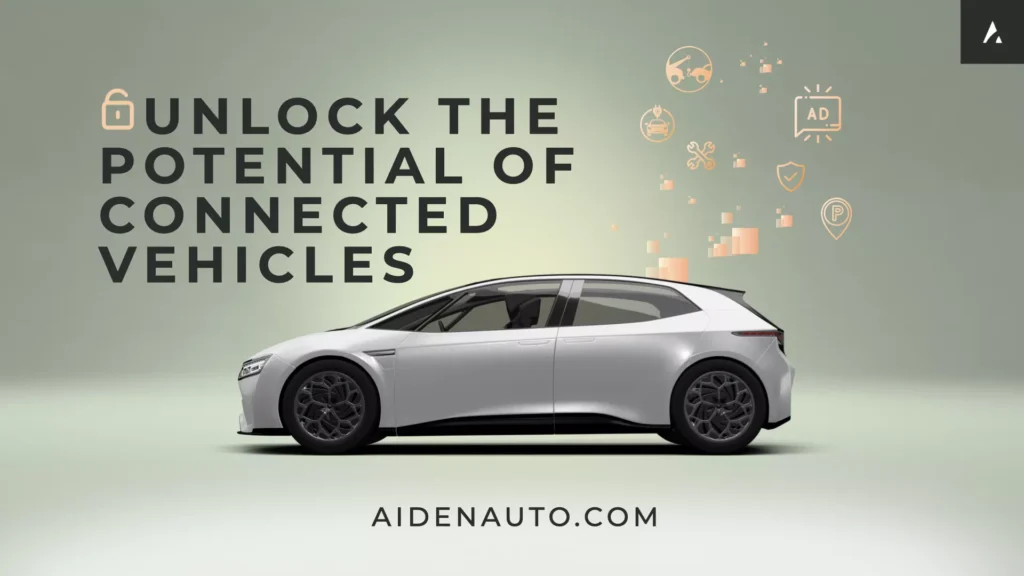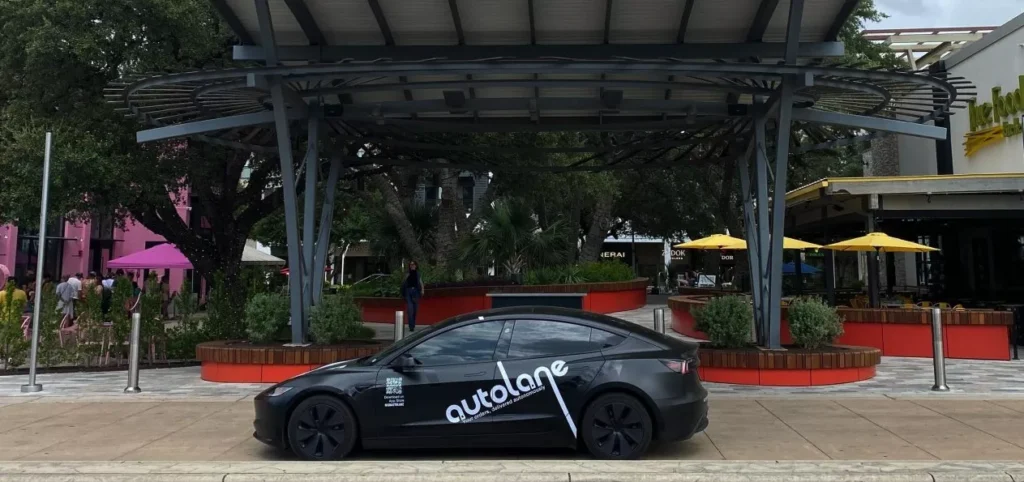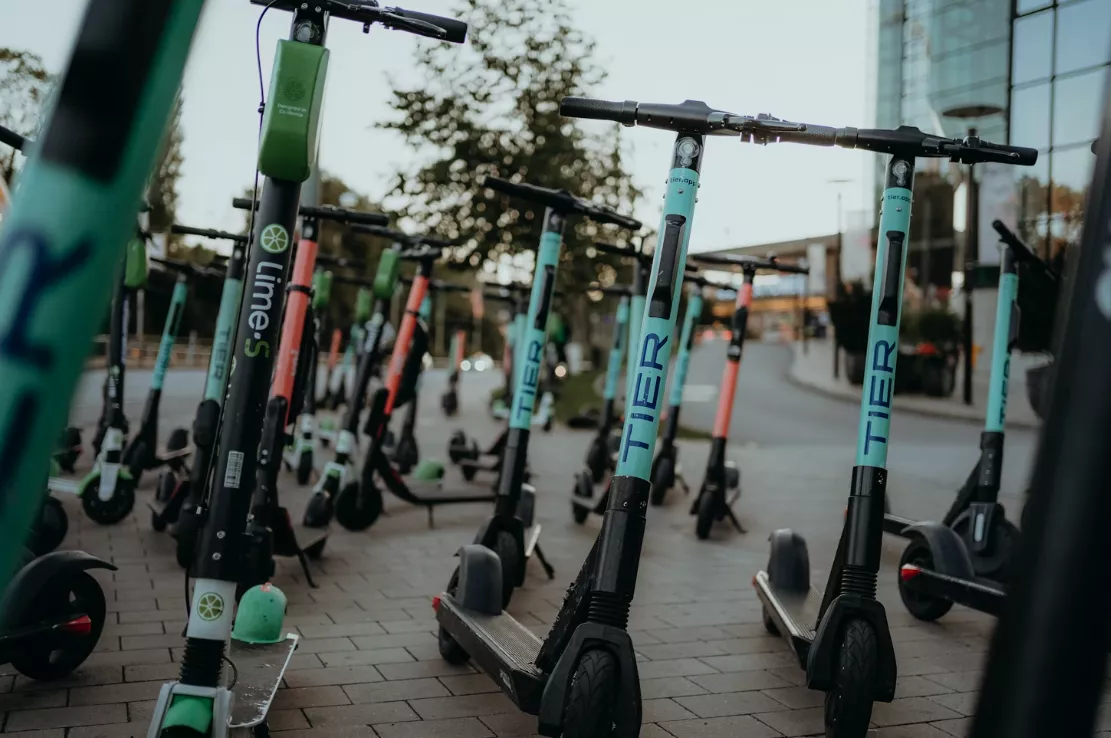












From EVs and batteries to autonomous vehicles and urban transport, we cover what actually matters. Delivered to your inbox weekly.

Owning an e-scooter or e-bike used to be the only way to guarantee easy, on-demand mobility. Not anymore.
Micromobility subscriptions are shaking things up — giving riders unlimited access to e-scooters, e-bikes, and shared mobility vehicles for a flat fee. No per-minute charges, no worrying about battery levels, no surprise overage fees. Just grab and go.
But here’s the question: Are micromobility subscriptions the future of urban transportation, or just another trend?
🚀 More companies are shifting to subscription models — Lime, Bird, and Voi now offer monthly ride passes, while startups like Swapfiets let you “own” a bike without actually buying one.
💰 Riders love the predictability — no more racking up insane per-minute charges. But do subscriptions actually save money?
🏙️ Cities are watching closely — if subscriptions can reduce car trips and boost transit use, they could become a key part of urban mobility planning.
In this post, we’ll break down how micromobility subscriptions work, who benefits, and whether they can truly replace ownership — or if pay-per-ride is still the smarter choice.
Micromobility started as a pay-per-ride business — quick, convenient, and perfect for short trips. But now, subscription models are taking over, offering riders unlimited access to e-scooters and e-bikes for a flat monthly fee.
Why? Because micromobility companies need riders to stick around.
Micromobility ridership has skyrocketed, with e-bike and e-scooter trips surpassing 130 million rides in 2022. Many of these trips were taken by repeat riders — prime candidates for subscription models.
As companies race to create sustainable business models, subscriptions are emerging as the logical next step — offering affordability, convenience, and reliability for riders while securing recurring revenue for operators.
But does a subscription model actually make sense for riders, or is it just another way for companies to lock in users? Let’s break it down.
Instead of paying per ride, users get unlimited access or discounted rates for a fixed monthly fee. For frequent riders, it’s what they’ve been waiting for.
Depending on the provider, riders can choose from different types of plans — each catering to a different level of usage and commitment.
Here are some of the most popular subscription models (at this moment).
For casual riders who take multiple short trips a day, paying an unlock fee every time adds up quickly.
Lime Prime, for example, offers unlimited free unlocks, letting riders start their trip without paying the usual upfront fee. According to Lime, this model makes short-hop travel more affordable and encourages more frequent usage.
Bird’s Unlock Pass works similarly, removing the paywall for users who rely on micromobility for quick trips.
For people who use scooters or bikes as their main mode of transport, subscription models like Voi Pass and Neuron Monthly Ride Pass offer unlimited rides within a time limit — usually 30 to 45 minutes per ride.
These passes significantly increase retention rates because users are more likely to stick with micromobility when they know their costs won’t fluctuate.
Short-term access without long-term commitment is another key offering.
Bird’s Day Pass and Lime’s Weekly Pass provide unlimited rides for a set period, making them ideal for tourists or occasional users.
These plans allow cities to attract non-residents to use their micromobility services while maintaining profitability.
For riders who want the convenience of owning a scooter or bike without the high upfront cost, long-term rental models like Swapfiets and Tier Leasing have emerged.
These services bundle vehicle ownership with maintenance and insurance, making them a more predictable and hassle-free alternative to buying.
This model is particularly popular in Europe, where bike culture is deeply ingrained.
Let’s talk money. Is a subscription really worth it? Here’s how it stacks up:
According to Lime’s own analysis, a Lime Prime member riding twice daily can save over $100 per month compared to pay-as-you-go pricing.
Here’s an example:
That’s over $130 in savings every month for frequent riders!
Micromobility companies aren’t pushing subscriptions just for fun — they’re doing it because it makes financial sense.
For years, shared e-scooter and e-bike providers have struggled with profitability. High operational costs, fleet maintenance, and the unpredictable nature of pay-per-ride models made long-term sustainability a challenge. Subscriptions change that.
By getting riders to commit to recurring payments, companies gain steady cash flow, higher retention, and better unit economics — all while making micromobility a more accessible daily habit.
Here’s why subscriptions are the perfect option for micromobility companies.
Pay-per-ride users come and go, but subscribers ride more frequently.
According to McKinsey, the micromobility sector has expanded two to three times faster than car-sharing or ride-hailing services, showing that when users adopt micromobility, they tend to stick with it.
Subscriptions provide stable, recurring income, helping micromobility companies offset seasonal dips in ridership.
A BCG report predicts the vehicle subscription market will grow over 30% annually by 2030, as operators move toward predictable revenue models.
By securing recurring payments from loyal riders, companies can reduce reliance on sporadic, pay-per-ride trips and build more sustainable business models.
When users know they’ve already paid for a pass, they’re more likely to ride daily instead of defaulting to cars or public transit.
A 2023 NACTO report highlights that affordability is a growing challenge in micromobility, with rising per-trip costs limiting accessibility for many users.
In cities where operators have introduced flat-rate subscription plans, ridership has remained more consistent, especially among commuters who rely on micromobility for daily travel.
Major micromobility players are doubling down on subscriptions.
Subscription pricing isn’t one-size-fits-all — companies are now testing hybrid models to attract both occasional and committed riders.
Micromobility is no longer just about getting from A to B.
The rise of subscriptions signals a shift toward making shared mobility a permanent part of urban transportation.
For companies, it’s a more sustainable business model. For riders, it means cheaper, more predictable travel costs. And for cities? It’s a big step toward reducing car dependency and congestion.
Micromobility subscriptions sound great — flat rates, unlimited rides, no per-trip fees. But do they actually save riders money, or are they just another way for companies to lock in customers?
The answer depends on how often you ride.
For commuters, delivery workers, and frequent users, subscriptions can slash monthly transportation costs.
But for casual riders? Pay-as-you-go (PAYG) might still be the better deal.
Let’s compare how much you’d spend per month under different pricing models:
If you ride just twice a day, PAYG can easily cost $150–$250 per month. That’s way more than an unlimited ride pass.
❌ Casual riders – If you ride less than 5 times per week, PAYG might still be the better option.
If you’re using e-scooters and e-bikes as a daily mode of transport, subscriptions make financial sense.
In short:
🚲 Ride often? Get a pass.
💰 Ride occasionally? Stick with pay-per-trip.
If micromobility companies keep lowering subscription costs, we might see more people ditching cars altogether — and that’s when things really get interesting.
Owning an e-bike or e-scooter isn’t for everyone — high upfront costs, maintenance headaches, and theft risks make buying less attractive.
But what if you could subscribe to one instead?
That’s exactly what companies like Swapfiets, Tier, and Dance are offering: long-term micromobility rentals that let you own a ride without the financial burden of actually buying it.
Instead of paying $1,000+ upfront for an e-bike or scooter, subscription services let riders pay a monthly fee for unlimited personal use.
✅ Fixed monthly pricing – No surprise costs, just a flat fee
✅ Maintenance included – Repairs? Replacements? Handled for you
✅ No commitment – Swap or cancel anytime, unlike traditional ownership
These companies are leading the charge:
Personal micromobility subscriptions blend the best of both worlds — the freedom of ownership without the financial risk.
As more cities crack down on dockless scooters and bike clutter, long-term rentals could become the new norm — letting riders ditch cars without committing to a full purchase.
Because why own when you can subscribe and ride?
Or is owning your own scooter/bike/car something we won’t be able to say “no” to?
Micromobility subscriptions are becoming a core part of city transportation strategies.
From Lime and Bird in North America to Voi Technology and TIER Mobility in Europe, cities are partnering with micromobility providers to expand access, reduce congestion, and push sustainable urban transport.
Let’s break down where subscription-based micromobility is gaining the most traction.
North American cities are prioritizing flexibility, offering subscription models as an alternative to car ownership and costly rideshare services.
European cities are moving toward structured, city-approved subscription models to cut down on vehicle clutter while incentivizing long-term use.
Asia-Pacific is leveraging micromobility subscriptions to complement public transport, making long-term rentals a viable alternative to car ownership.
Micromobility subscriptions are here to stay — and cities are shaping how they evolve.
With urban centers prioritizing sustainability, reduced congestion, and multimodal integration, subscription-based micromobility is poised to become a key player in the future of urban transport.
The real question is — Will your next ride be pay-as-you-go, or will you subscribe and forget about per-ride fees altogether?
Micromobility subscriptions sound like the perfect alternative to car ownership, but they’re not without their flaws.
While companies like Lime, Bird, and Voi are pushing hard for riders to sign up, not everyone is convinced yet.
Let’s break down the biggest roadblocks stopping micromobility subscriptions from becoming mainstream.
Micromobility subscriptions can save frequent riders money, but for casual users, the price isn’t always worth it.
Subscriptions work best for daily commuters, but casual users might find them too pricey — especially when compared to public transit.
Micromobility subscriptions aren’t available everywhere. While cities like Berlin, Paris, and Stockholm are seeing success, many places still rely on traditional pay-as-you-go models.
If your city doesn’t have a strong micromobility presence, subscription plans won’t do you much good.
Unlimited ride subscriptions sound great — until too many people start using them. Some micromobility companies have had to limit ride times or cap usage to stay profitable.
The bottom line is — companies are struggling to balance affordability with profitability, leading to more restrictions on “unlimited” plans.
Micromobility subscriptions don’t exist in a vacuum — they’re competing with public transportation, car-sharing, and even walking.
What we can see here is — micromobility subscriptions are great for short daily commutes, but they aren’t a one-size-fits-all solution.
The key question is: Can micromobility providers make subscriptions cheap, reliable, and flexible enough to compete with other transport options?
If they can, we might see the rise of subscription-based urban mobility — but if not, micromobility might remain a niche alternative instead of a city-wide commuting staple.
Micromobility subscriptions are just getting started — but where do they go from here?
As more cities, companies, and commuters embrace subscription-based mobility, we’re about to see a shift in how these plans evolve. From employer-sponsored rides to fully integrated urban transport networks, here’s what’s coming next.
The next big step? Full integration between micromobility subscriptions and public transit.
Instead of juggling multiple apps, riders will be able to plan, book, and pay for all their trips in one place.
Expect more cities to bundle micromobility with transit passes, making it a seamless part of daily commuting.
Now, this one sounds really cool.
Forget free office coffee — micromobility benefits might be the next big workplace trend.
Companies are starting to subsidize micromobility passes as an alternative to commuter benefits, reducing parking costs and encouraging sustainable transport.
One thing is sure.
More companies will offer micromobility perks, especially in cities where parking is expensive or limited.
Cities are realizing that micromobility needs to be affordable for everyone — not just those who can pay for unlimited ride plans.
Some places are already testing discounted micromobility passes for low-income riders:
More cities will offer subsidies for micromobility subscriptions, just like they do for public transit.
And as we mentioned in our previous edition, the combination of micromobility and public transit is what countless cities across the world need to solve their urban mobility challenges.
Right now, most micromobility subscriptions follow a flat-rate model — but that’s likely to change.
To attract more users, companies are experimenting with new pricing models:
What to expect?
More customized pricing options. Think weekend passes, part-time plans, and flex subscriptions based on ride frequency.
Subscriptions are becoming a major part of how cities move.
If these trends continue, we’ll see a world where:
✅ Micromobility is built into public transit systems – One pass covers buses, trains, bikes, and e-scooters.
✅ Employers pay for micromobility benefits – Workers swap parking permits for scooter and bike credits.
✅ Flexible pricing makes subscriptions accessible – Riders choose plans based on when and how often they ride.
The question isn’t if micromobility subscriptions will grow — it’s how fast.
One thing is clear — whether you rent, ride, or own, shared micromobility is here to stay.
Micromobility subscriptions promise convenience, savings, and a greener commute — but do they live up to the hype?
For some riders, these plans are a no-brainer. For others, they’re still too expensive or limited to be practical. Let’s break down who benefits the most and where subscriptions still need work.
For short trips? Yes.
But completely replacing cars? Not quite yet.
What’s still holding subscriptions back?
What needs to change?
✅ Micromobility subscriptions are great for:
❌ They’re not ideal for:
The bottom line? If you ride often enough, a subscription is a smart move — but it’s not yet the one-size-fits-all solution to urban mobility.
Making micromobility subscriptions work at scale takes smart design, seamless integration, and the right strategy.
Want to bring smarter micromobility to your city?
Let’s talk. Get in touch with us and let’s build something that moves people — without the friction.